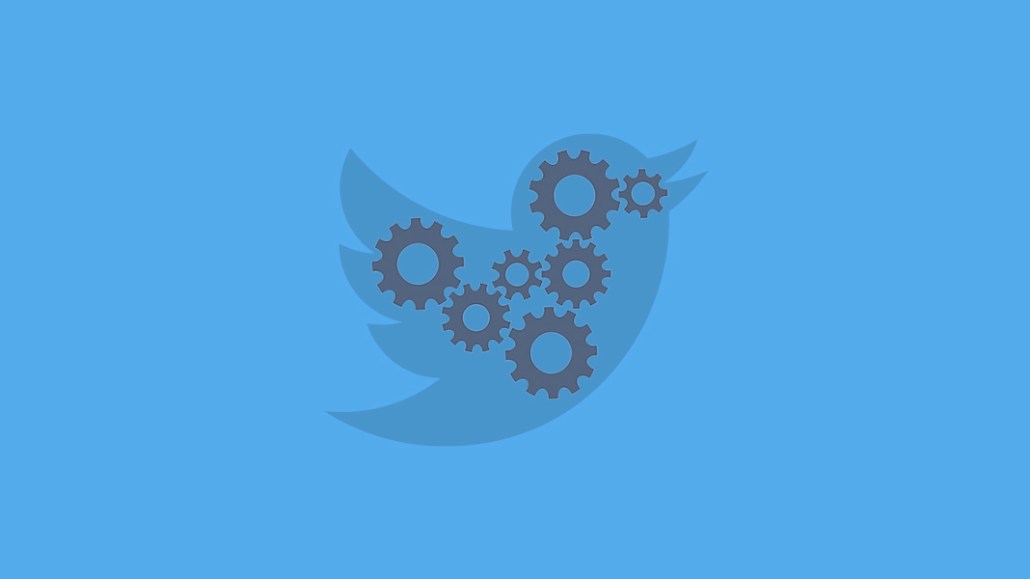Join us Dec. 1-3 in New Orleans for the Digiday Programmatic Marketing Summit
Twitter tweaks Facebook with new issue ads policy that exempts publishers

Twitter announced a new issue ads policy Aug. 30, and in contrast with Facebook’s issue ad policy, it’s winning over news publishers by exempting them out of the gate.
The Twitter policy, taking effect Sept. 30 in the U.S., requires advertisers to get certified to run ads that refer to an election or candidate or advocate for big issues including abortion, civil rights, climate change and guns — a list that could change in the coming months as topics come and go in the news.
“The intention of this policy is to provide the public with greater transparency into ads that seek to influence people’s stance on issues that may influence election outcomes,” Twitter said in an announcement. “We don’t believe that news organizations running ads on Twitter that report on these issues, rather than advocate for or against them, should be subject to this policy.”
The policy is part of a broader response by Twitter, along with Facebook and Google, to backlash over their failure to prevent the spread of misinformation and Russian interference in the 2016 presidential election. The tech giants have been shoring up their efforts to stamp out fake news and accounts and tightening up policies in recent days to buff their images before they testify before Congress after Labor Day and ahead of the midterm elections. With these policies, the idea is to let users see things like who’s behind the political ads they see, how much is being spent and who’s being targeted.
Both Twitter and Facebook announced political ads policies back in May. At the time, Facebook extended its policy to issue ads and said it would apply to news publishers. That outraged publishers and their associations, which said the policy would stigmatize them as biased. Some including The New York Times, Financial Times and New York Media responded by cutting spending on the platform. Facebook then tweaked its policy in June in recognition of those concerns, but some publishing sources were still dissatisfied.
Twitter had the benefit of seeing Facebook’s experience play out as it developed its own policy. It was in contact with dozens of news organizations and trade organizations and heard their concerns about the Facebook policy. With its publisher-friendly policy, it could have an opportunity to get some ad dollars that would have otherwise gone to Facebook.
Twitter’s publisher exemption isn’t automatic; they have to apply and meet certain criteria, including having a minimum audience of 200,000 monthly uniques in the U.S., dedicated editorial staff and contact information online. They also have to have a searchable archive. Publishers also can’t be primarily user-generated or aggregated content.
Publishers also can seek exemptions for their journalists if they meet requirements like having their name in their Twitter profile and stating their affiliation with the news outlet.
In a Q&A with reporters to discuss the policy, Twitter said for that reason, Medium would not qualify for the exemption. Twitter also isn’t taking a stand on sites based on their political leanings, such as Breitbart, but it does say that in order to qualify for the exemption, sites can’t be dedicated to advocating for a single issue.
News publishers and their associations were generally bullish on the policy and compared it positively to Facebook’s issue policy. The size requirement raised concerns that the policy could disadvantage niche or small, subscription-based publishers.
“We are encouraged by what we understand of Twitter’s approach to providing users transparency around true political advertising,” said Maribel Wadsworth, president of the USA Today Network and publisher of USA Today. “Unlike Facebook, Twitter has readily acknowledged that news coverage about political issues is not advertising and therefore intends to exempt news organizations. We are concerned that the exemption currently would be offered only to news organizations that meet a minimum threshold of monthly unique visitors. The threshold needs to be set so as not to unintentionally harm small- and mid-sized legitimate local news organizations. We will be watching that closely.”
“We’re pleased to see Twitter be thoughtful in how they roll this out,” said Jason Kint, CEO of Digital Content Next, a trade group for digital publishers. “It’s never been more important to protect the press, whether it be the individual reporter or news companies of all size. We look forward to reviewing the details as they’re formally adopted.”
Twitter didn’t go into detail about how it arrived at the audience requirement, only that it needed to create a minimum qualifying threshold. Twitter also knows that ones below that size may be unlikely to spend to promote their content anyway. It’s also going to work with publishers in the month ahead to explain the exemption process in the month ahead, which gives time for the policy to be adjusted.
Twitter has won over publishers in other ways lately, helping make up for a recent loss in their Facebook traffic. Twitter has delivered more video views to publishers and helped publishers secure ad deals for their live shows on the platform.
More in Media

Marketers move to bring transparency to creator and influencer fees
What was once a direct handoff now threads through a growing constellation of agencies, platforms, networks, ad tech vendors and assorted brokers, each taking something before the creator gets paid.

Inside The Atlantic’s AI bot blocking strategy
The Atlantic’s CEO explains how it evaluates AI crawlers to block those that bring no traffic or subscribers, and to provide deal leverage.

Media Briefing: Tough market, but Q4 lifts publishers’ hopes for 2026
Publishers report stronger-than-expected Q4 ad spending, with many seeing year-over-year gains.






